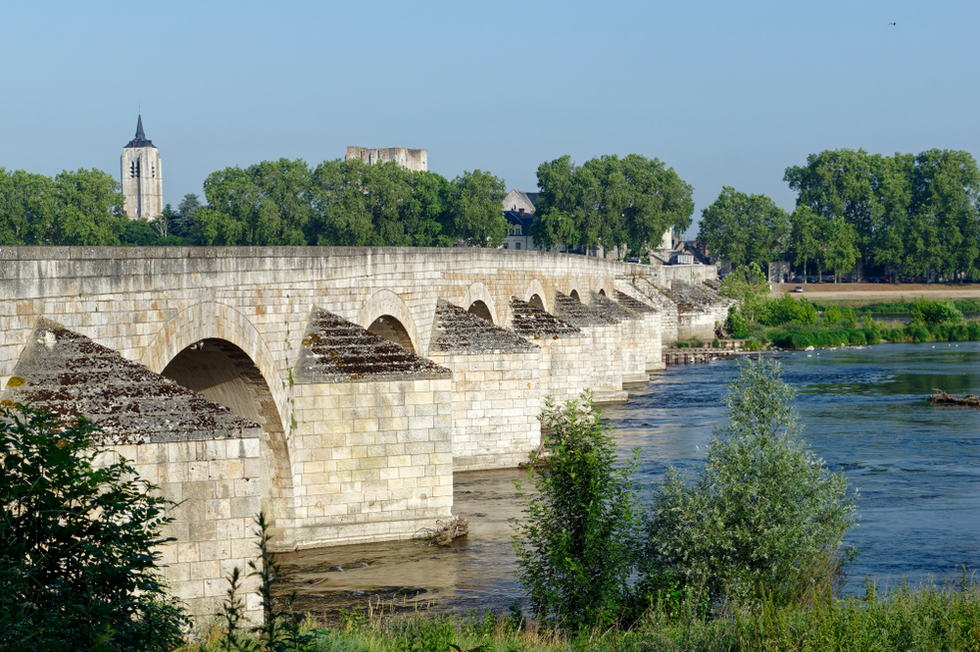The brooding and impressive 15th-century Château Dunois has historical links stretching back to almost-mystical medieval antecedents. The current castle was built by Jean d’Orléans, who fought alongside Joan of Arc in the siege of Orléans, on the foundations of an earlier 10th-century fortress that belonged to the lords of Beaugency, whose feudal power extended throughout the region. Now owned by renowned digital artist Jérémie Bellot, its rooms display sensational digital art and immersive installations. Astride the street (la rue du Pont) that leads to one of the château’s secondary entrances, the Voûte St-Georges (St. George’s Vault) is an arched gateway from the earlier château.
More medieval moodiness is on hand at La Tour César, a 36m-tall (118-ft.) castle keep that is all that remains of an 11th-century citadel. It’s a fine example of Romanesque military architecture, but the interior is in ruins.
Eglise Notre-Dame, place Saint-Fermin, a 12th-century abbey, was rebuilt after it was burned during the Wars of Religion (1562–98). You can still see traces of its original Romanesque architecture in the chancel and transept. Nearby, the 16th-century Tour St-Fermin, a bell tower with a panoramic view of the valley, is famous for bells that ring out a traditional tune three times a day.
The 10th-century Eglise St-Etienne, pl. du Martroi, is one of the oldest churches in France. Now deconsecrated, it is owned by the municipality and is open only for temporary exhibitions of painting and sculpture.
Note: This information was accurate when it was published, but can change without notice. Please be sure to confirm all rates and details directly with the companies in question before planning your trip.









